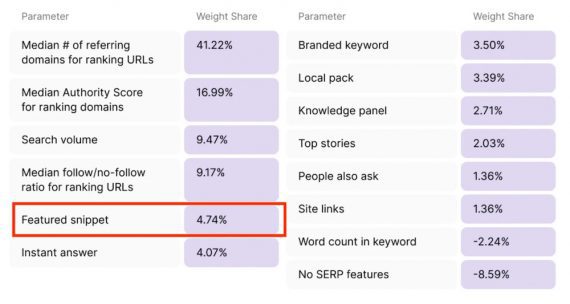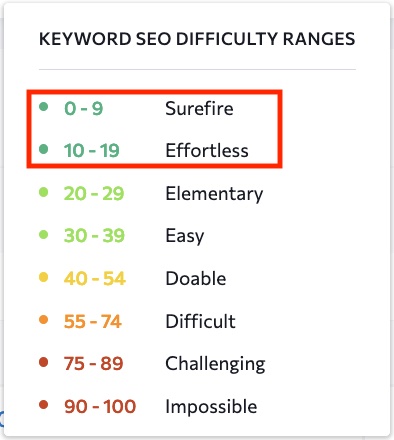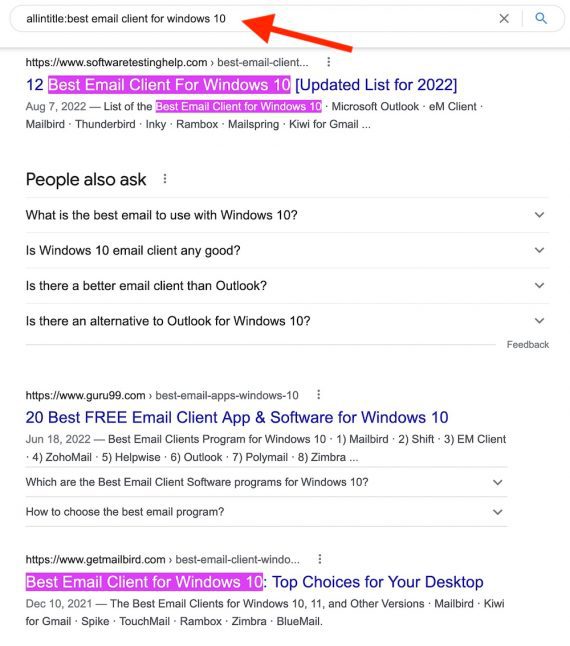
Identifying keywords for organic search rankings is easier now than it was a decade ago thanks to advanced tools. A key factor in choosing a keyword is competition – the number and quality of sites already ranking for that term.
How can we tell if a keyword is worth it?
I will address this question in this post.
Keyword difficulty
All leading SEO platforms offer a competition metric – a method of filtering lists of keywords based on how difficult it is to rank on page 1 of Google.
Semrush suggests select keywords with difficulty below “14” as they are the easiest to rank for. Semrush uses several factors for this metric, but most of them are probably related to backlinks: the number and authority of linking pages.
In addition, Semrush includes “SERP related qualities” for each keyword when calculating its difficulty. For example, a keyword that generates a featured snippet is relatively more difficult, according to Semrush.
Semrush suggests keywords with a metric of 14 or lower. Keywords that produce featured snippets are relatively more difficult. Click on the image to enlarge it.
Ahrefs, another platform, recommends keywords with a difficulty below “10”.
To calculate, Ahrefs counts the number of referring domains that link to top-level pages. No further calculation is required, Ahrefs claims.
In SE Ranking, keywords below a “9” difficulty are “Safe” and “10-19” are “Effortless”. So both should be doable for newer sites. SE ranking trust in their internal assessment of the Page Domain Authority Rank when calculating keyword difficulty.

In SE Ranking, keywords with a difficulty below “9” are “Safe” and “10-19” are “Effortless”.
WebCEO has a more transparent approach to identifying keywords with higher demand and lower competition: the “Keyword Effectiveness Index”. Is calculated dividing the search volume (demand) by the number of Google search results (supply).
A query with a relatively higher KEI has higher demand and lower supply and is therefore easier to rank.
I appreciate the openness in the calculation of KEI, no hidden formulas. However, check KEI’s findings on other platforms.
For example, take the query “best email client for Windows 10”:
Ahrefs: 58 (difficult) Semrush: 73 (difficult) SE Rating: 48 (doable) WebCEO: 6.93 (difficult)
For “mozilla thunderbird email”:
Ahrefs: 54 (difficult) Semrush: 87 (difficult) SE Rating: 46 (doable) WebCEO: 9.9 (difficult)
Google allintitle: search
Finally, another tactic to assess keyword competition is to search Google [allintitle:keyword]as allintitle: best email client for Windows 10.
This will produce search results for all pages with your query in the title. Chances are these are competitors who are optimizing for your keyword. Comparing the number of results for various keywords provides an estimate of how many sites are being optimized for each.
For example, allintitle: Google search results:
“best email client for windows 10”: 27 (doable) “mozilla thunderbird email”: 6,630 (hard)

A Google search for “allintitle: best email client for Windows 10” returns 27 results. Click on the image to enlarge it.
Optimize for humans
There is no universal formula for keyword difficulty. None of the four tools above consider internal linking or on-page SEO, a critical weakness. Keyword difficulty metrics only help estimate the time and effort required to achieve a Google page 1 ranking. There is no reason to avoid competitive terms.
Remember to create content for humans, not Google. A search query represents a need. Tackle it regardless of whether it would qualify.
[ad_2]
Source link




